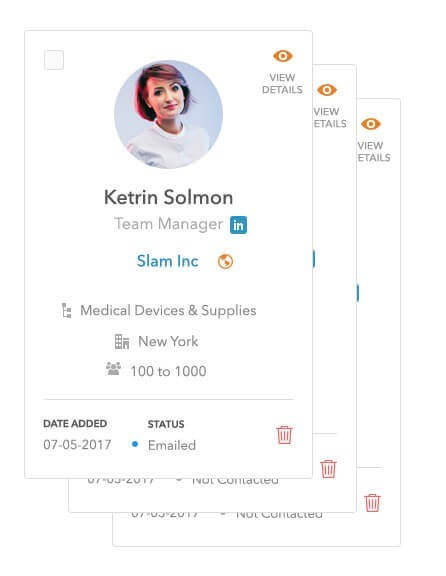Do you remember the line, portrayed by Alec Baldwin, in the infamous movie Glengarry Glen Ross?
“Always be closing”.
Always be closing basically means that every effort you make in a sales pitch should be with one and only goal in mind: to close the sale. If you haven’t seen the movie, be warned. While it is an excellent piece of movie history, the language is “harsh”, to say the least!
The other thing you may have taken away from the film is the nature of the cold call. Now, this movie came out in 1992. And some of you may be thinking with the advent of digital, inbound marketing, that cold calling is dead.
Not so fast! Cold calling is not dead.
It’s just changed a bit.
No one likes receiving cold calls. No one really likes making cold calls. And while inbound marketing is a necessary part of your overall marketing strategy, it has not replaced cold calling as an effective, efficient way of reaching customers.
In 6 Lead Generation Insights for 2007, a research report by Mike Schultz, publisher of RainToday.com, Andrea Meachan Rosal, Chief Content Officer of RainToday.com and John Doerr, Principal of the Wellesley Hills Group concluded that: “Cold calling is second only to referrals as the number one lead generation tactic.”
So if cold calling isn’t dead, then how has it changed?
In the past cold calling has been used in the first step of the process. A sales person would get a list of untargeted names (usually purchased) and check off the names until they reached someone who was willing to meet with them in person or on the phone. This philosophy followed the theory of probability: for every 100 calls made, 1 person will agree to meet.
While this may get some appointments, you can surely agree that there is a lot of time wasted following this practice!
Today, cold calling has morphed into the second step of the sales process. Today, the cold email starts the ball rolling in the process.
The salesperson can send the cold email to the decision maker and that person will either respond, forward or delete the email. If the cold lead is interested in learning more, they can provide a time to take the next step and meet, naturally being more receptive and more attentive to the meeting.
Once a lead is warm, they’ll be much easier to get on the phone. From there, you can use a good script and close the deals.
Essentially, this process turns the “cold” in cold call to “warm”.
When a lead takes an action with your email, they are engaging with your (or your brand). Since they’ve engaged, these leads are no longer cold, right?
With cold email, you’re after a response, not a sale. If the contact opens the email, great. You can send them a personal follow up email. If they reply or click on the resource offer inside, they’re ready for a warm call.

Cold Calling Success Strategies
So how do you reach this happy medium and utilize the “new” cold calling? Let’s look at a few steps you can take to make the most of your cold calling efforts:
Create a targeted list of prospects.
This goes without saying. Naturally, you would want to drill down to your target prospect as specific as possible. To start searching qualified prospects, the best place to start would be on social media. It will depend on the business you are targeting, but most likely you will find your prospects on LinkedIn and sometimes on Twitter. To do this, you’ll need to understand the needs and pain points of the businesses you are serving. Then, you can begin to search those industries and job titles to make connections with decision makers.
Use a combination of strategies.
Inbound marketing tactics (and tools) do have a place with the cold calling process. After verifying the prospect email address with a tool like AnyMail finder, for example, after you have sent your cold email, use email software that can track if your prospect has opened the email or not.
Once you see that the email is opened, you can make a follow up call. Using this intel, with a tool like Close.io, for example, you know that the email has been acknowledged and it won’t be a surprise to hear from you. If you are successful in receiving a reply, Gmail plugins like FullContact can further help identify if your prospect is a winner by automatically pulling the profiles of your contacts.
Keep in mind that calling a prospect that has never heard of you or your brand is never successful. You can use other inbound strategies such as content sharing on social media, as well as targeted Facebook ads. This will make sure that they have heard of you when you make that call!
Do your research.
Once you have your target customer established, you will want to do your research. Focus on the industry, location and the title of the decision maker in the buying process.
You may also want to search social media platforms for recent blog posts, comments or shared content on their feed. By doing this you will learn more about them and be able to focus more on their issues at hand. At a minimum, it helps to ask better questions and determine lead quality.

Cold Calling in the New Millenium
As if the act of effective cold calling isn’t scary enough, these steps seem downright impossible if followed manually. Even with all the tools in the world, if it takes you all day to get to know your lead, where is the time to actually make the call?
Always Be Closing.